Yes, you can make bread dough in advance and bake it later. This is a great way to save time on busy days or to prepare for a special occasion. There are two main methods for making bread dough in advance: the refrigerator method and the freezer method.
Refrigerator Method
The refrigerator method is best for dough that you want to use within a few days. To make bread dough using the refrigerator method, simply follow your favorite recipe and then place the dough in a covered container in the refrigerator. The dough will rise slowly in the refrigerator, and you can bake it whenever you’re ready.
Tips for using the refrigerator method:
- Let the dough rise for about 30 minutes before refrigerating it. This will give the yeast a chance to start working.
- Make sure the dough is well-covered in the refrigerator. This will prevent it from drying out.
- The dough can be refrigerated for up to 3 days.
- When you’re ready to bake the dough, take it out of the refrigerator and let it come to room temperature for about an hour. This will give the yeast a chance to wake up and start working again.
- Bake the dough according to the recipe instructions.
Freezer Method
The freezer method is best for dough that you want to use within a few months. To make bread dough using the freezer method, simply follow your favorite recipe and then place the dough in a freezer-safe container. The dough will freeze solid, and you can store it in the freezer for up to 3 months.
Tips for using the freezer method:
- Let the dough rise for about 30 minutes before freezing it. This will give the yeast a chance to start working.
- Make sure the dough is well-covered in the freezer. This will prevent it from drying out.
- The dough can be frozen for up to 3 months.
- When you’re ready to bake the dough, take it out of the freezer and let it thaw in the refrigerator overnight.
- Once the dough has thawed, let it come to room temperature for about an hour. This will give the yeast a chance to wake up and start working again.
- Bake the dough according to the recipe instructions.
Benefits of Making Bread Dough in Advance
There are several benefits to making bread dough in advance.
- It saves time. Making bread dough in advance can save you time on busy days. You can simply take the dough out of the refrigerator or freezer and bake it when you’re ready.
- It allows you to plan ahead. Making bread dough in advance allows you to plan ahead for special occasions. You can make the dough a few days or even weeks before the event, and then simply bake it when you need it.
- It gives the dough time to develop flavor. The slow rise in the refrigerator or freezer will give the dough time to develop flavor. This will result in a more flavorful bread.
Making bread dough in advance is a great way to save time and plan ahead. With a little planning, you can always have fresh, homemade bread on hand.
Get My NO-FAIL Crafts + Recipes Guide!
This post may contain affiliate links. Please read my disclaimer.
“Can you make the dough in advance and bake it later?” is a frequently asked question regarding my roll recipes. It’s a great question, as rolls taste best right out of the oven, but finding the time to make the dough, let it rise, shape, rise again, and so on can be challenging. , all in the hours leading up to a meal. It’s particularly difficult for large holiday meals when you’re traveling to eat somewhere else or have a lot of other obligations. Today I’m going to share two methods for making rolls ahead of time and baking them later. The good news is that you can definitely make bread dough in advance and cook the rolls later!
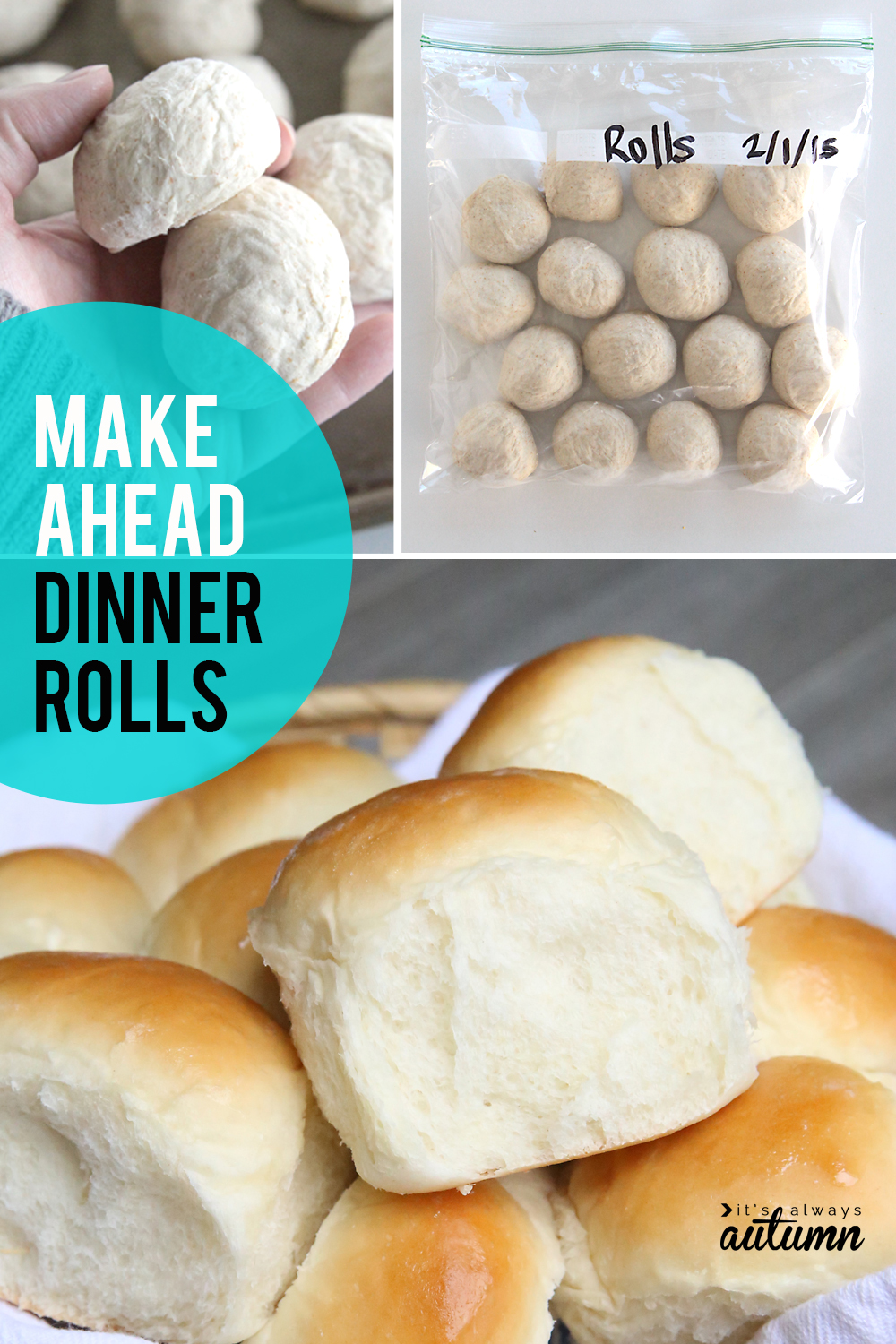
How to prepare rolls ahead of time and bake them later: the refrigerator technique
If you want to prepare rolls several hours to a day in advance, use this method. Using this method is a great way to finish off some work the day before dinner.
As specified in your recipe, combine and knead your dough. Let it rise the first time. Form dough and transfer to a 9×13 pan (or any other pan you typically use for your recipe) that has been oiled. After lightly misting the tops of the rolls with nonstick spray, place plastic wrap over the pan:
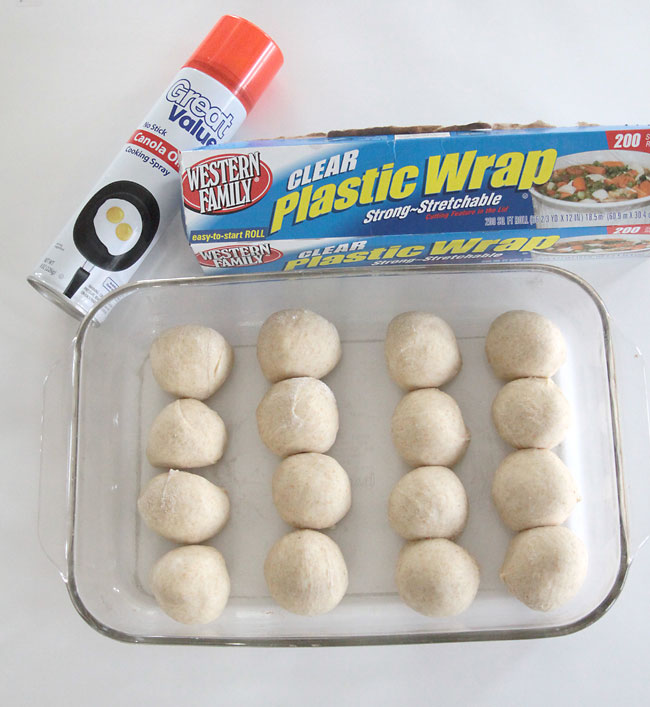
Put the rolls in the refrigerator for two to four hours (you could probably extend this to three hours if necessary). Remove the rolls from the refrigerator 30 minutes before baking. When they were inside, they ought to have done some rising:
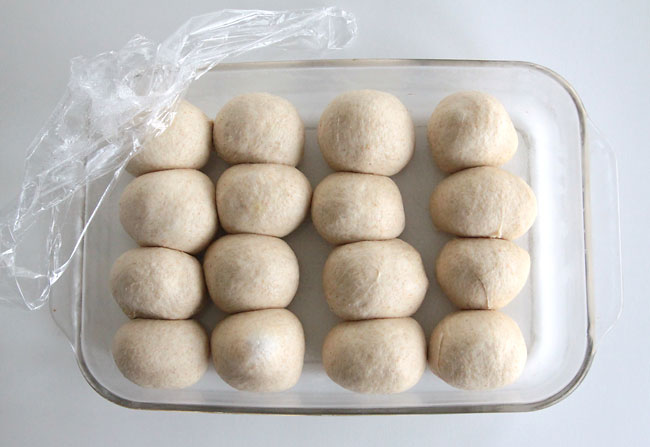
If they seem very small, it may be because your fridge is very cold, and they will take longer to finish rising. To get them started, try putting them in a slightly warm oven. Otherwise, let them sit out on the counter for 30 to 60 minutes to come to room temperature and finish rising a bit.
Bake as directed in a preheated oven.
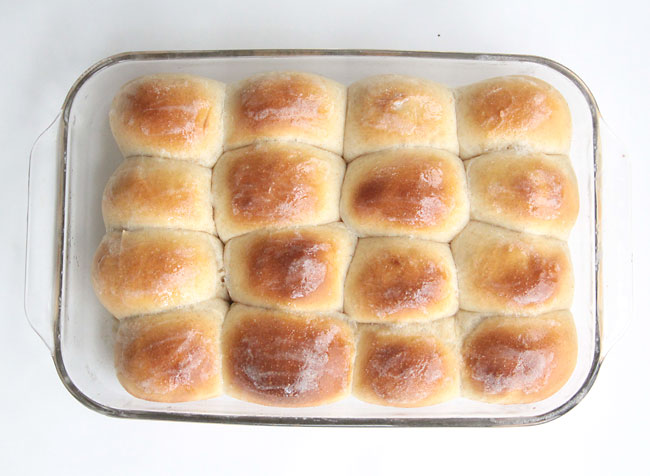
This method works great because it allows you to have hot, fresh rolls three hours before dinnertime even if you won’t be home. I frequently use this technique on Sundays when we have an afternoon church service and won’t have time to finish making a batch of rolls when we get home.
When I wanted to serve cinnamon rolls and raspberry rolls in the morning but didn’t want to wake up too early to start them, I’ve also used this method.
The freezer method: preparing rolls ahead of time and cooking them afterwards
This technique can be used to prepare rolls up to one month ahead of time or to make two batches, bake half of them right away, and freeze the other half for a later date.
As specified in your recipe, combine and knead your dough. Let it rise the first time. Form the dough, transfer it to a cookie sheet pan that has been oiled, and put the pan straight in the freezer.
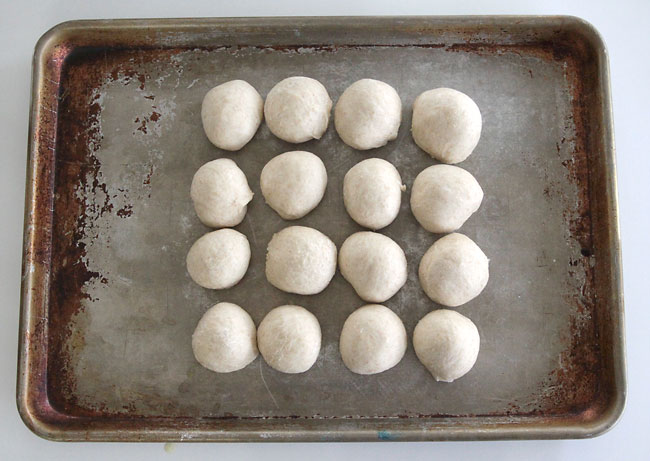
After a few hours the rolls should be frozen hard. Put them in a ziplock bag and mark the date on it. They keep quite well for about a month. They still function after that, but I notice that the texture is a little different and the rising isn’t as good.
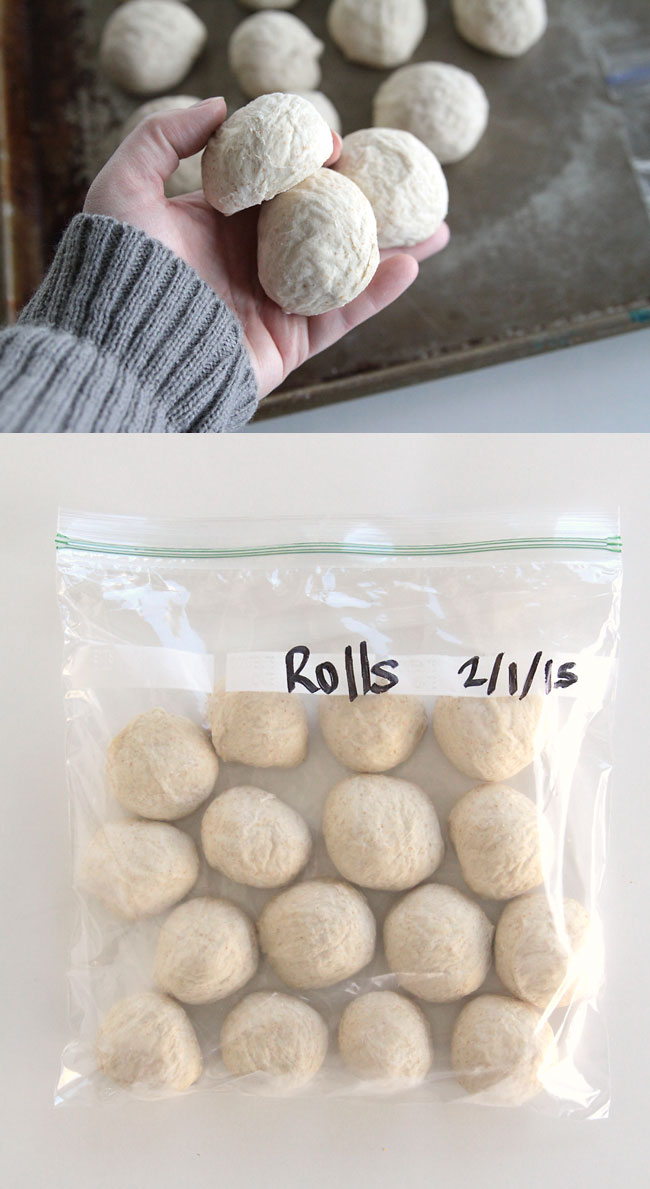
These must be taken out of the freezer, put in a baking dish that has been lightly greased, covered with a dish towel, and then left for three to four hours to thaw and rise before baking.
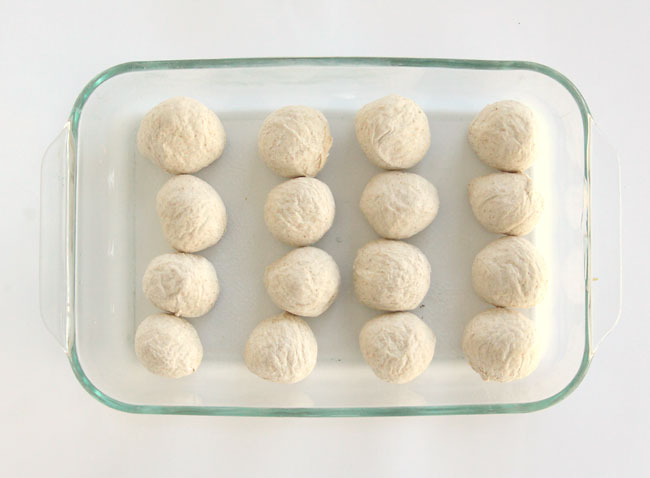
The precise duration may differ slightly based on factors like the size of the rolls and the temperature in your home, so you’ll need to keep an eye on them and adjust your timing accordingly. If you place them somewhere warm, like on the counter above the running dishwasher, in a slightly warmed-over oven that has been turned back off, or in a window that faces the sun, you can expedite the process a little.
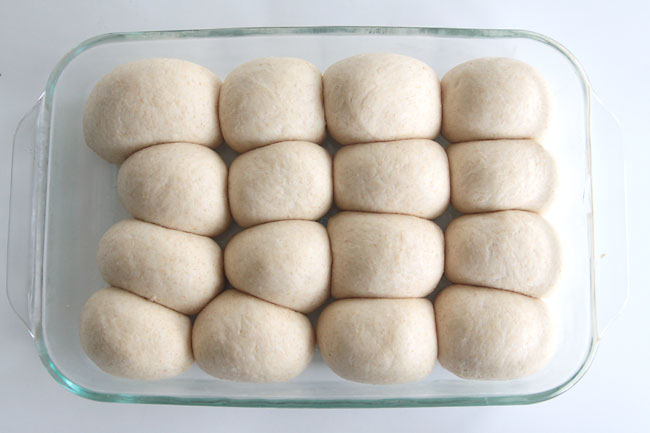
Then just bake as directed in a preheated oven.
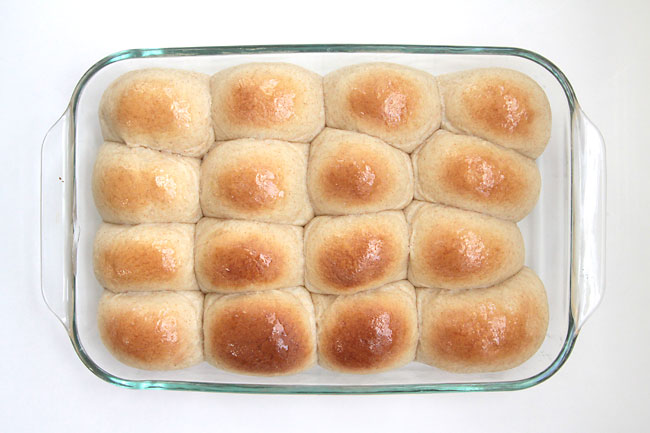
When I last used this technique, my rolls were ready to bake precisely three hours after I took them out of the freezer, but I had to spend an hour away from home. When I returned, I simply put them in the refrigerator for an hour and baked them, and they turned out beautifully.
When my family was smaller and I knew we wouldn’t finish a batch of rolls at once, I used to use this freezer method every time I made a batch. I would place 8 rolls out for baking and rising that day, and freeze the remaining 8. That way, I could do half the work and have two dinners with freshly made rolls.
I seldom ever bake loaves, so I’ve only ever used the freezer method for rolls. Of course, loaves can also be made using this method, but it will take longer to thaw and rise.
I hope this helps a little bit with the preparation of your upcoming holiday meal!
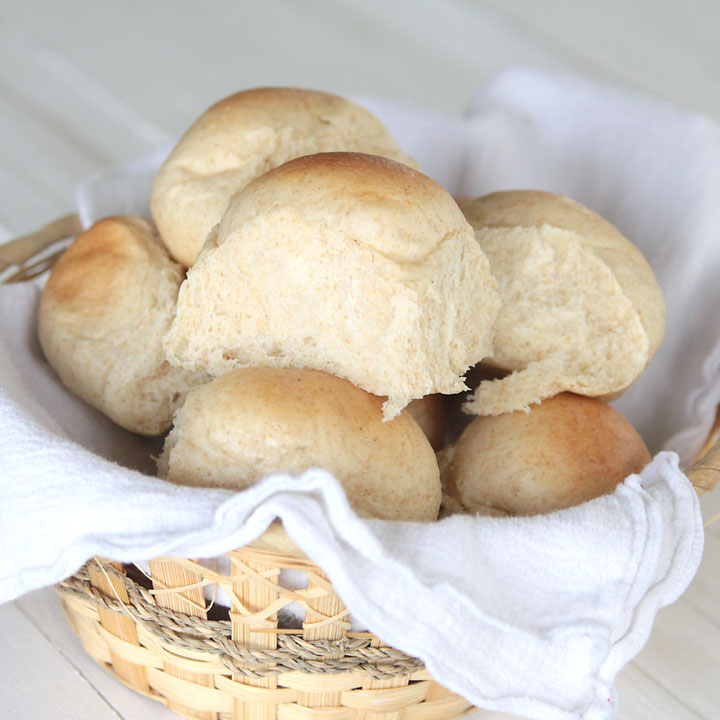
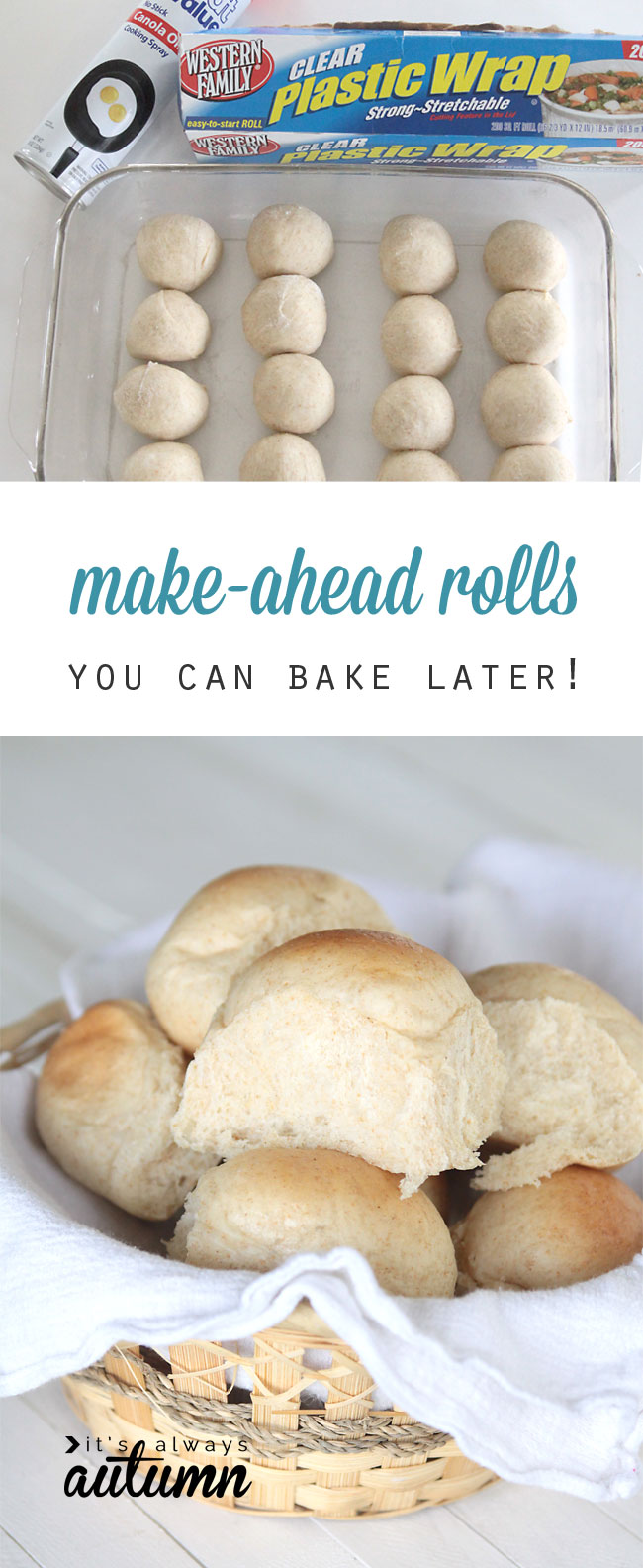
Hi there! I’m a stay-at-home mother of five who enjoys crafting. I love EASY projects that anyone can make! I’ve tried crafts, recipes, sewing, and holiday projects. You can do them too!
How to Make Ahead a Super Easy Refrigerator Bread Dough
FAQ
Can I make my bread dough ahead of time?
Can I refrigerate unbaked bread dough?
How long can bread dough sit out before baking?
How long will raw bread dough last in the fridge?
Can you make bread dough in advance?
In this article, we will explore the science behind bread dough and whether or not you can make it in advance. Yes, you can make bread dough ahead of time. Many bread recipes have an option for either overnight or refrigerated rising, which allows you to prepare the dough ahead of time and let it rise slowly.
Is it good to have wheat bread?
Yes, it is good to have wheat bread. Whole grains keep the entire grain intact, including the germ, endosperm and the bran. The bran is the harder outer layer which is high in fiber. Whole wheat is high in fiber and considered more nutritious than refined grains. Whole wheat have been linked to numerous health benefits, including a decrease risk of type 2 diabetes, heart disease and certain cancers. Whole wheat bread made from 100% whole wheat flour is higher in fiber, vitamins and minerals than breads made from refined wheat.
Should you make dough ahead of time?
Making dough ahead of time is a true game-changer. With proper storage containers and labeling, you can be sure your dough will stay fresh until you need it! After preparing your recipe up to the point where it needs kneading, shape into loaves and wrap tightly in plastic wrap.
Is making dough a good idea?
Making dough is a great way to save time in the kitchen and have delicious, homemade treats ready to go at any given time. Whether it’s pizza, brioche, or cinnamon rolls, learning how to make dough ahead of time can save you time and energy.
